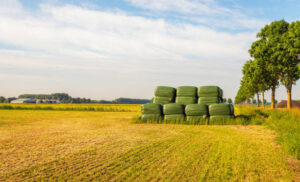In Australia’s diverse and often unpredictable climate, managing silage effectively throughout the year is crucial for farmers aiming to maintain high-quality forage for their livestock. Silage covers play a pivotal role in protecting silage during both wet and dry seasons, offering tailored solutions to withstand environmental challenges unique to Australian conditions. Understanding how these covers adapt to seasonal changes can empower farmers to optimise preservation, reduce spoilage, and ultimately improve farm profitability.
The Importance of Silage Covers in Australia’s Climate

Australia’s climate varies widely — from tropical wet seasons in the north to arid dry seasons in the interior and temperate zones in the south. These fluctuations pose different challenges for silage storage. Silage covers, designed to protect forage from air, moisture, and contaminants, must adapt to such extremes.
In the first 100 words, it’s important to highlight how silage covers serve as a frontline defence against environmental factors that threaten forage quality. Whether it’s heavy rains causing water logging or intense sunlight leading to drying and cracking, choosing the right cover for the season can make a significant difference.
Managing Silage During the Wet Season
Australia’s wet season, particularly in northern and eastern regions, brings heavy rainfall and high humidity. These conditions can jeopardise silage quality by promoting the growth of mould and spoilage bacteria if water seeps into the silage stack.
Key Considerations:
- Waterproofing: Silage covers used during wet seasons must have excellent waterproofing capabilities. Multi-layered polyethylene covers with UV stabilisers are ideal, as they prevent rainwater infiltration while resisting degradation from sunlight.
- Weight and Securement: Strong winds often accompany wet-season storms. Heavier silage covers with reinforced edges and the use of sandbags or tires to secure the cover help prevent displacement.
- Drainage Solutions: Proper site preparation beneath the silage stack is critical. Covers are most effective when combined with well-drained ground to avoid water pooling that can compromise forage quality.
Farmers in Queensland and Northern Australia, for example, rely on robust silage covers designed specifically to handle intense rainfall while ensuring the silage remains airtight.
Adapting Silage Covers for the Dry Season
In contrast, the dry season presents different challenges. Arid conditions and intense Australian sun, especially in central and southern regions, can cause silage covers to degrade or lose effectiveness if not suited for such harsh environments.
Key Considerations:
- UV Resistance: The Australian sun can be unforgiving. Silage covers used in dry seasons need enhanced UV resistance to prevent cracking, brittleness, and premature failure.
- Moisture Retention: While preventing spoilage from excess moisture, dry season covers should also minimise moisture loss. Silage that dries out excessively loses both nutritional value and palatability.
- Flexibility and Longevity: Materials that maintain flexibility under high temperatures and prolonged sun exposure help prevent tears and punctures, preserving the integrity of the silage.
Farmers in areas like New South Wales and Victoria often select silage covers with superior UV inhibitors and thicker films to withstand the dry, sunny months without compromising the forage beneath.
Seasonal Transition: Preparing for Fluctuating Conditions
Australia’s transitional seasons — from wet to dry or vice versa — require strategic silage management. Covers that performed well in one season may need reinforcement or replacement as conditions change.
Tips for Seasonal Transition:
- Inspect Regularly: Check silage covers for damage, tears, or signs of wear. Early repairs can prevent spoilage.
- Use Layered Covers: In some cases, layering a UV-resistant cover over a waterproof base can provide dual protection.
- Adjust Anchoring Methods: Wind patterns shift with the seasons, so securing techniques may need adaptation to keep covers firmly in place.
This flexibility in silage cover management ensures Australian farmers can protect their forage through unpredictable weather patterns while maximising storage longevity.
Why Investing in Quality Silage Covers Pays Off
Across both wet and dry seasons, the right silage covers provide a cost-effective solution that safeguards feed quality and reduces losses. Investing in covers tailored for specific seasonal demands can lead to:
- Reduced spoilage and waste
- Improved feed quality and livestock performance
- Lower labour and replacement costs
- Increased overall farm productivity
Given Australia’s large-scale farming operations and variable climate, the benefit of using appropriate silage covers cannot be overstated.
Conclusion
Managing silage in Australia requires a nuanced approach that considers the challenges of both wet and dry seasons. Silage covers are not a one-size-fits-all product; they must adapt to the conditions farmers face throughout the year. By choosing covers with the right waterproofing, UV resistance, and durability, Australian farmers can protect their valuable forage from spoilage and maintain consistent feed quality. This adaptability to Australia’s climate ensures silage remains a reliable resource, underpinning successful livestock production and farm sustainability.
If you’re a farmer navigating the complexities of silage management in Australia, focusing on season-specific silage covers is an investment in resilience, quality, and long-term success.